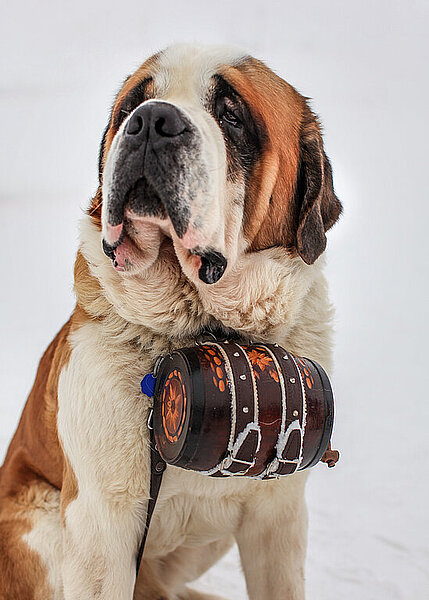Drooping eyelids

Have you ever seen a dog with drooping eyelids? This is a condition also known as ptosis. Ptosis means that the muscles that lift the upper eyelid are weakened or paralyzed. This can cause the eyelid to fall over the eye and restrict or even obscure vision. This can be very uncomfortable and dangerous for your dog.
Causes of ptosis
There are several possible causes of ptosis in dogs. Some of these are:
- Congenital: Some dogs are born with a genetic predisposition to ptosis. This mainly affects certain breeds, such as the St. Bernard, the Mastiff or the Bloodhound.
- Injury: An injury to the eye or facial nerve can lead to damage to the eyelid muscles. This can be caused by an accident, a bite or an operation, for example.
- Inflammation: Inflammation of the eye or eyelid can lead to swelling and impaired mobility of the eyelid. This can be triggered by an infection, an allergy or an autoimmune disease, for example.
- Age: With increasing age, the eyelid muscles can lose tension and slacken. This can cause the eyelid to droop.
Symptoms of ptosis
Symptoms of ptosis in dogs can vary depending on the severity and cause. Some typical signs are:
- Drooping or drooping upper eyelid
- Restricted or obscured vision
- Red or irritated eye
- Increased tearing or discharge from the eye
- Frequent blinking or squinting
- Shyness towards light or noises
- Head tilted or squinting
Treatment of ptosis
The treatment of ptosis in dogs depends on the underlying cause. In some cases, drug therapy may be sufficient to reduce inflammation or improve muscle function. In other cases, surgical correction may be necessary to remove the excess tissue or lift the eyelid. In any case, you should have your dog examined regularly by a vet to avoid possible complications.
Prevention of ptosis
Ptosis in dogs is not always preventable, especially if it is a congenital condition. However, there are some measures you can take to reduce the risk or alleviate the symptoms. These include:
- Keeping your dog away from potential hazards that could lead to an eye or facial nerve injury.
- Grooming your dog's eyes regularly and gently removing dirt or foreign objects with a damp cloth.
- Consult your vet if you notice any signs of inflammation or infection in your dog's eye.
- Feed your dog a balanced and nutritious diet that supports his health and immune system.
- Have your dog vaccinated and dewormed regularly to protect them from disease.
Ptosis in dogs is a serious condition that can affect your dog's quality of life. If you have a dog with drooping eyelids or want to adopt one, you should inform yourself well and take care of their eye health. That way you can give him a happy and healthy life.
The authors assume that a veterinarian should be consulted if an animal is ill and that medication should only be taken after consultation with a doctor or pharmacist. Only an individual examination can lead to a diagnosis and treatment decision.
We help you find the nearest vet → This way